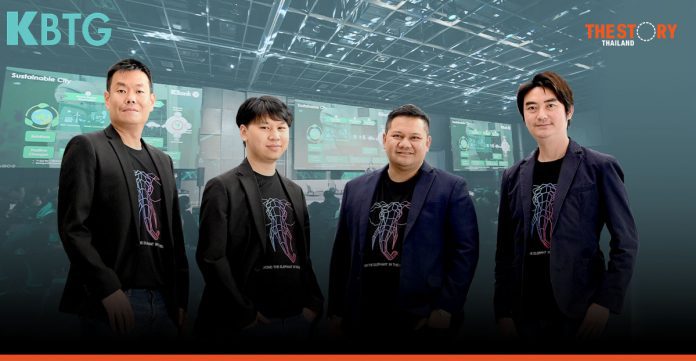Kasikorn Business – Technology Group (KBTG) has continued its mission to change Thailand for the better with science and technologies. In its latest move, KBTG has partnered with MIT Media Lab in showcasing moonshot researches at MIT Media Lab Southeast Asia Forum for the goal of spurring inspirations and collaborations to perpetuate better changes in Thailand. The move is also intended to develop culture and ecosystem for frontier researches.
Guided by its vision to become a Thai tech firm to shine as a global leader, KBTG has recognized the importance of frontier researches. It therefore has forged collaborations with world-class MIT Media Lab – conducting co-researches, granting KBTG Fellowship for its doctoral student, and organizing a forum to showcase moonshot researches in hopes generating impacts in Thailand.
KBTG, in collaboration with various Thai partners and MIT Media Lab, has recently organized MIT Media Lab Southeast Asia Forum in Thailand. The three-day event has headlined top researchers from MIT Media Lab who presented their interesting products based on Connected Mind + Body, Cultivating Creativity, Decentralised Society, Future World and Life With AI.
Shared “Spirit”
MIT Media Lab Southeast Asia Forum is the third fruit of the first meeting between KBTG Chairman Ruangroj “Krating” Poonpol and Pat Patara Nutaporn, the first Thai Ph.D. student at MIT Media Lab in 20 years, back in April 2022. The first fruit materialized in the form of a co-reseach between KBTG and MIT Media Lab, while the second is a KBTG Fellowship for Pat.

Ruangroj is impressed with MIT Media Lab’s interdisciplinary researches and its “Why don’t you try it?” attitudes, which apparently encourages the spirit of explorations. Rather than focusing on why a researcher will do something, MIT Media Lab believes its researchers should find answers to unanswered questions. Such conviction resonates with KBTG’s ambition to “create what is still lacking”.
As a former participant in academic Olympiads (winning a gold medal for physics and a bronze for math at national Olympiads) and a former student who received special training under the Project to Develop Persons Gifted in Science and Technology, Ruangroj loves science. He had also long dreamed of bringing MIT Media Lab’s world-classs scientists to Thailand. He believed that if these prominent scientists showcased their research findings that would soon set mega-trends here, young people in not just Thailand but also other parts of Southeast Asia would be inspired to work as scientists in the future. Ruangroj’s dream has finally materialized with MIT Media Lab Southeast Asia Forum, the first such event in Southeast Asia.
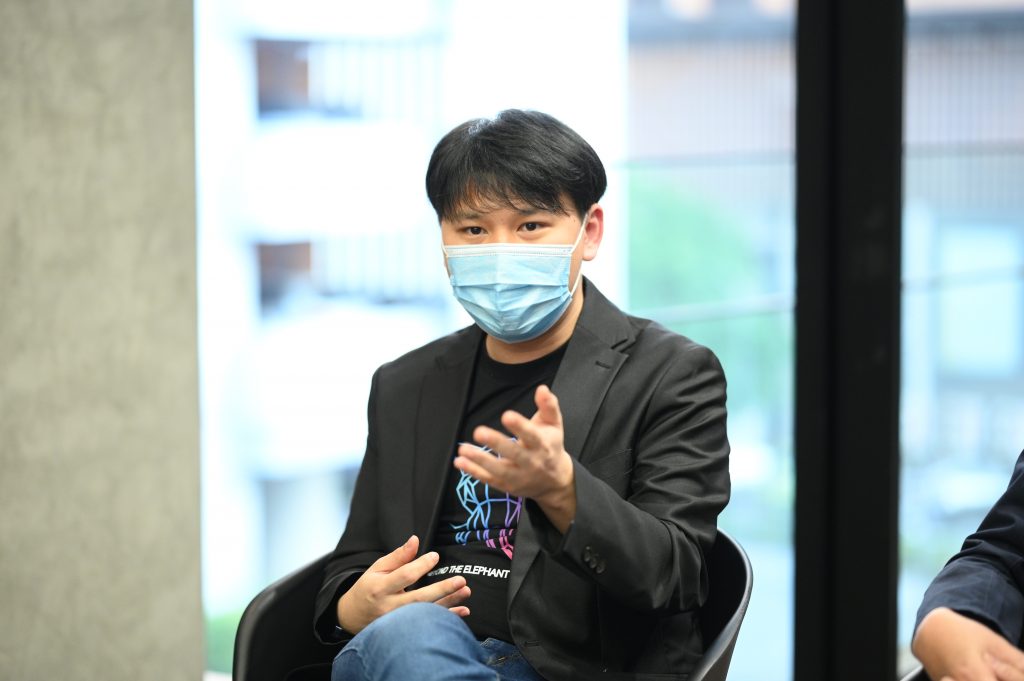
Pat, meanwhile, has been fascinated with science from a young age. During his childhood, Pat dreamed of being a scientist and shaping the future because of scientist characters he found in comics. He so far had not had the confidence that he would really pursue his dream until he came across a TED Talk speeech by Professor Pattie Maes, who back then headed MIT Media Lab’s Fluid Interfaces Group. During the speech, she presented the Sixth Sense project to show how wearable technology could practically transform humans into cyborgs. In other words, she underlined how tech-enabled wearables could empower mankind. To date, her TED Talk speech has still ranked among the world’s 10 most-watched TED Talk clips. Her inspiring talk also convinced Pat – back then a secondary student – that scientists could shape the future in reality, not just in comics. Pat has since been determined to become one such scientist and he has really hoped that he will become a MIT Media Lab scientist one day.
Although Pat could not enroll into an undergraduate program of the Massachusetts Institute of Technology (MIT), he managed to become a doctoral student under the supervision of Professor Maes at MIT Media Lab. During his studies, he has got exposed to world-class facilities and inspiring environment. MIT Media Lab is the birthplace of many technologies including touch screen, navigation hologram, personal robots and AI or artificial intelligence. Such experience often made Pat wonder how good it could be if he found such inspirations in Thailand. How great life would be if he had not had any need to fly to the United States for MIT Media Lab but MIT Media Lab instead had come to Thailand? Supported by KBTG and various other organizations, Pat one day found it possible to fly MIT Media Lab’s researchers to Bangkok to inspire Thai youth and more.
MIT Media Lab Southeast Asia Forum, a fruit from the meeting of two men passionate about science and technologies, is a solid proof of how far efforts to make better changes for homeland with science and technological researches can go. Several Thai enterprises and organizations have worked together for crucial co-researches. Engaged in the project are KBTG, Bangkok Bank, the MIT Association of Thailand, Magnolia Quality Development Corporation Limited (MQDC_, True Group, Thaicom, SCG, MITTA Group and Techsauce.
“KBTG and MIT Media Lab have engaged in two-way collaborations. While KBTG has dispatched its candidates to join the research project at MIT Media Lab, it has also bought MIT Media Lab researchers to Thailand. Just a few Thai organizations have the abilities to do so,” Ruangroj commented.
One big benefit of MIT Media Lab Southeast Asia Forum is that the event enables MIT Media Lab to witness Thailand’s potential about and commitment to science and technology development including researches. Frontier researches, in particular, have now received special emphasis because they promise to trigger Thailand’s significant advancement in many aspects including city management.
In Ruangroj’s view, Thailand has never lacked talents. But the country just does not have many talents focusing on connecting the talents together for big impacts. MIT Media Lab Southeast Asia Forum was held with contributions from many partners. Apart from KBTG and MIT Media Lab, several companies have joined in to support the forum. Each of them has many talents. If all partners work together for one same goal, Thailand will be able to change for the better in a big way.
Beyond The Elephant in The Room
MIT Media Lab does not focus just on creating new technologies but also how those technologies will empower people. At MIT Media Lab Southeast Asia Forum, Beyond The Elephant in The Room is thus the theme with elephant representing not just Southeast Asia but also big technologies. The Elephant is at the forum for people to ride it. The event was held to take humans farther than ever before.
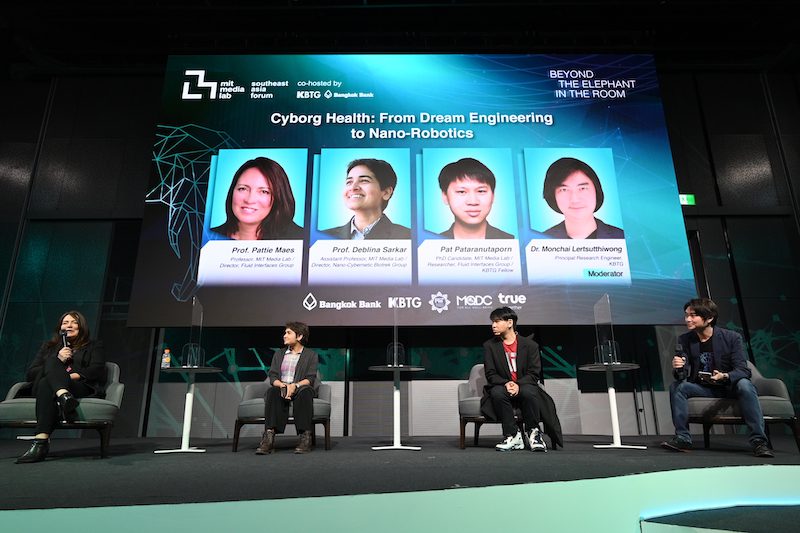
The content during the first two days of the forum, which were open to the public, was very rich. At the event, Augmented Intelligence exhibits showed how AI can empower humans in many ways. There are Learning, Creativity and Beyond zone and Cyborg Health zone, which underlined how technologies could blend into human bodies for a longer, healthier life. Nano-Cybernatic Biotrek, for example, has already created sensors that can be embedded in human brains and send electrodes to all cells in the connected bodies.
MIT Media Lab Southeast Asia Forum also showcased unimaginable exhibits related to Cultivating Technology concepts, which aimed at spurring creativity. Professor Mitchel Resnick, a pioneer of LEGO Learning that created programmable LEGO My Storm, has joined MIT Media Lab and played a vital role in the development of Scrate as a learning platform for children. Today, Scrate has attracted more than 100 million users. It is therefore the world’s biggest platform for children to study coding together. As MIT Media Lab has fostered multidisciplinary works, talents from various fields have come together here. Artists, scientists, engineers, designers, developers and businesspeople have worked at MIT Media Lab with a belief that a solution to a big problem does not come just one method or effortf from just one field. In their opinion, knowledge from various fields must be combined to deliver the best solution. So, when MIT Media Lab Southeast Asia Forum was held, the event addressed a variety of topics from space, to human capabilities, and to creative society. The results therefore prove exciting. MIT Media Lab Southeast Asia Forum, in all, has made Thais see various new possibilities out there.
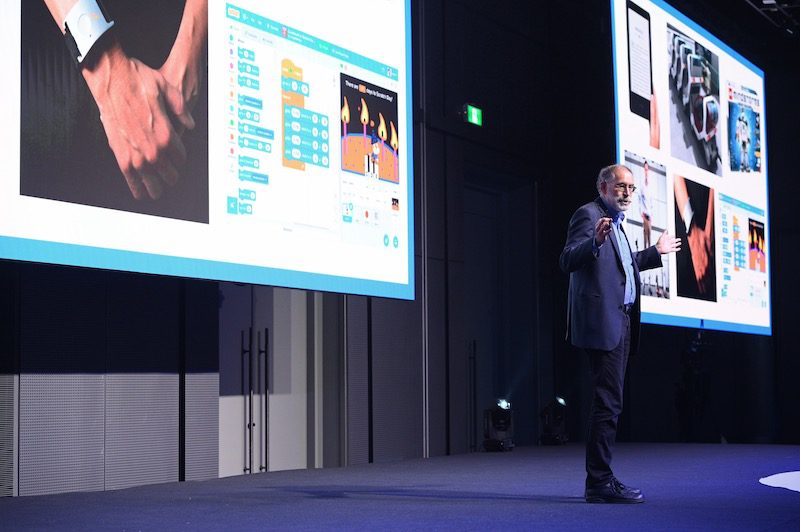
“A project highlighted by MIT Media Lab at the forum showed how bacteria in human stomaches can be turned into musical notes. Another exhibit revealed how sensors-integrated fiber pieces can become electronic devices. Many children walked towards me and said they had never thought before that they would be able to love science and arts all at the same time. They told me they had never imagined before that scientists could look this cool. I am thrilled to see the impacts of MIT Media Lab Southeast Asia Forum. I am glad that the forum is inspiring. It has successfully spread the magic of MIT Media Lab’s interdisciplinary thinking approach,” Pat said.
He recounted that when he first thought about introducing MIT Media Lab to Thailand, he was not so sure about Thais’ response. But to his delight, MIT Media Lab Southeast Asia Forum attracted overwhelming interest. The feedback exceeded initial expectations. While some topics at the forum were quite complicated, all of the forum’s seminars were full. A total of 800 people attended the seminars, including those discussing spaces, Augmented Reality, and sensors that could be embedded in human brains. Thais were apparently excited to learn and explore new things at the forum. Visitors ranged from children to high-level executives. The Bangkok governor also joined in. Everyone then returned home with some inspirations.
“A key message from MIT Media Lab Southeast Asia Forum is ‘Nothing is Impossible’. Once you realize this, you will be able to tackle challenges. This is the magic that MIT Media Lab can cast,” Pat said.
MIT Media Lab’s work culture exudes 4Ps of Creative Learning namely Passion, Project, Play, and Peer. People who are excited about their projects will be able to do well only when work environment is not too stressful. There must be room for playing and learning from mistakes. Projects should complement one another. Teamwork should also be promoted. KBTG intends to promote such work culture and really hopes that young people visiting MIT Media Lab Southeast Asia Forum have absorbed such culture to an extent.
“During the two days of the forum for visitors, we noticed that children were not reluctant to approach professors and ask questions. I believe that such encounters will give inspirations to children. Next year, we will upgrade our event further to generate miore impacts. KBTG aims to drive Thailand forward and contribute to the country’s role in global development,” Ruangroj said.
Future You … Researches on AI
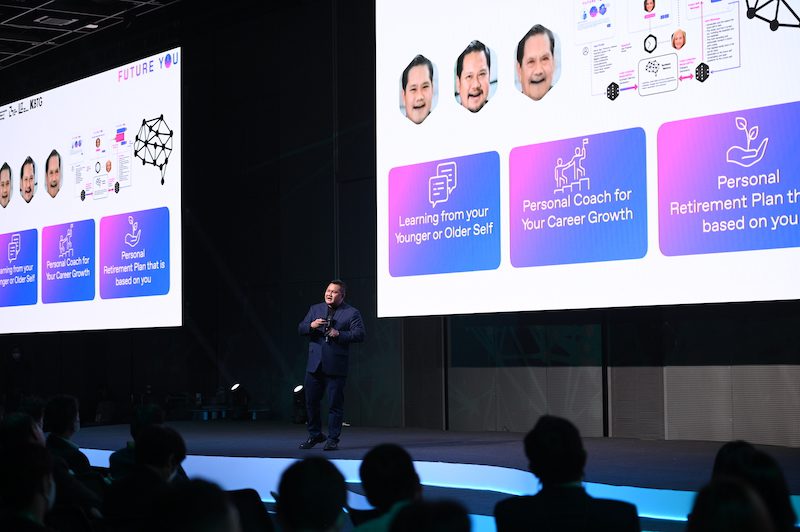
Future You featured human-empowerment experiments. Focusing on the approach of encouraging people to think ahead with a longer timeframe in mind, these experiments aimed to generate positive impacts on people. Some volunteers for the experiments were chosen randomly to interact with Future You, while the rest did not have the privilege of interactions. Psychological assessments were then conducted to determine how Future You affected the volunteers, all of whom aged between 18 and 24 years old. Participants in the experiments were encouraged to do self-reflections because their current version could affect their future. Future You was designed to help people see what they could be in the future. When people are aware of their possibilities, they will be more cautious of their choices’ long-term impacts.
Dr. Monchai Lertsutthiwong, principal research engineer at KBTG Labs, said a focus on long-term results was more useful than a focus on short-term results. Because MIT Media Lab focuses on what can happen in the long run, it can naturally develop moonshot researches. With the right thinkig apporach, MIT Media Lab clearly sees the results of its today’s actions. It is very difficult to motivate people. But if people are well aware of the consequences of what they do today, they can be very driven. The clearer the picture of their future, the more motivated they can become in changing their habit for good results.
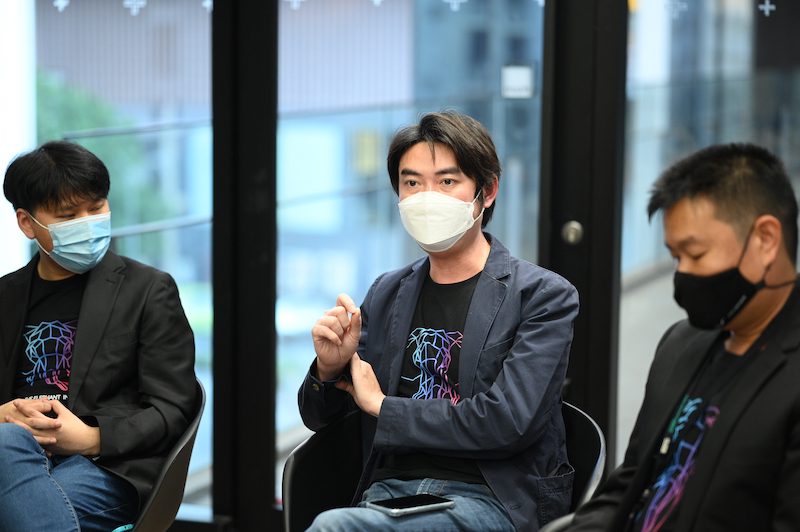
When MIT Media Lab looks at AI, it does not think about using this technology in giving information to people. Rather, it focuses on how to use AI for Augmented Intelligence. Future You project is an example of how AI can empower humans.
The first batch of Future You volunteers covered 200 people. Of them, those who could interact with AI-enabled future version of themselves have developed positive attitudes towards their future. Their stress reduces as they gain greater self-confidence. They have come to believe more in their abilities and their potential.
“Future You shows how AI can enhance humans’ long-term vision. It marks the beginning of how people can interact with their AI-enabled future version of themselves. Such interactions, for example, can also help with career path. Conducted through the collaboration between MIT Media Lab and KBTG, Future You let Thai children see what they can become in the future,” Pat said.
MIT Media Lab offers a furistic environment. Its lab rooms are surrounded by glass wall. So, all teams at the lab can see what others are doing. Their colleagues and other teams, as a result, are some sources of inspirations. With many teams around, it is easier for researchers there to recognize new possibilities too. Aside, MIT Media Lab does not produce just technologies because it focuses on creating “tools” to connect humans with others, with new possibilities, and also the future. Output therefore covers robotics, AI, bio-technology and various social platforms. MIT Media Lab has never lost sight of the future.
“In spite of my familiarity with MIT Media Lab, working with KBTG does not make me feel like I am dealing with a Thai enterprise. In many ways, KBTG seems a lot like a unit of MIT Media Lab. When working together, I feel like we are in the same team with shared passion to do our exciting job. We have had much fun working together. For Future You project, we had held meetings every two days because we needed to quickly develop the project’s concrete results. We were excited all the way and happy to see our final output,” Pat said.
Ruagroj said Human-AI Symbiotic, which resonates with MIT Media Lab’s idea of human-capability enhancement and social development through human-AI coexistence, went well with KBTG’s intention to boost human power and create positive social impacts with technologies.
KBTG is now increasing people’s capabilities and potential in many ways. For instance, Thai NLP (Natural Language Processing) has been integrated into its call center for the purpose of improving service delivery. The number of call-center staff has not been reduced because technological integration focuses on delivering increasingly better customer experience. Empowered by technologies, KBTG Call Center can lower customers’ waiting time by 300,000 hours in a year. Such number of hours is equivalent to 35 years in total.
Riding AI and big-data waves, KBTG has developed not just NLP for call-center operations but also Face Recognition technologies. Now, it has also set its sight on collaborating with MIT Media Lab to leverage AI for financial businesses and human interactions with technologies. KBTG believes that Future You will help many people change their thinking approach and become more focused on long-term results. Following Future You project, KBTG is set to pursue more collaborations with MIT Media Lab next year..
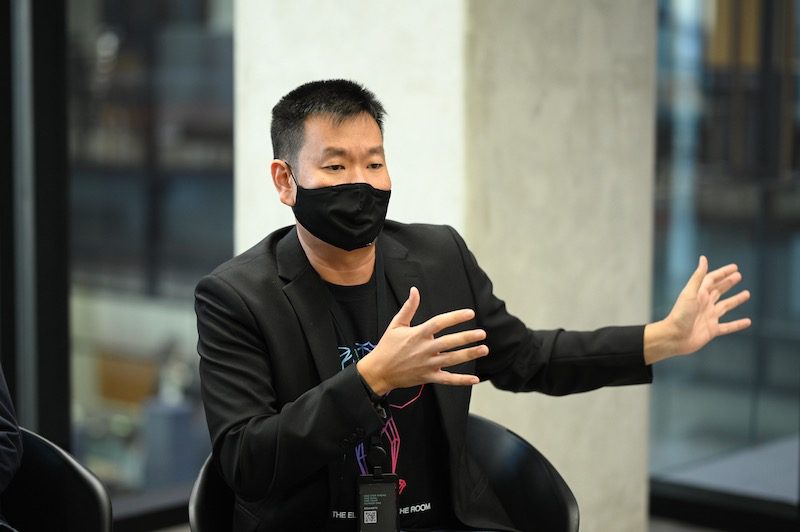
Dr. Thadpong Pongthawornkamol, managing director of KBTG Labs, said the next step would be the application of research findings. He has expected researches to pave way for the development of highly-accessible products and services that suit Thai context. He has pointed out that MIT Media Lab’s blockchain researches can be useful to Thailand’s health-tech development. Some researches can also help with sustainability, smart cities, etc.
KBTG does not intend to exclusively use MIT Media Lab’s technologies either. On the contrary, it plans to expand collaborations to facilitate the development of various products for Thai people. These products do not have to be associated with KBTG or KBANK only. Output therefore will benefit not just the financial sector but also many other sectors.
On the long-term plan, KBTG hopes to develop an ecosystem that connects Thai organizations with MIT Media Lab so that the culture of frontier researches can catch on in Thailand and MIT Media Lab’s technologies can be leveraged for Thais-oriented innovations. KBTG hopes its collaborations with MIT Media Lab will deliver solutions to various organizations for the benefits of all sides.
Life-Changing, Country-Changing Moments
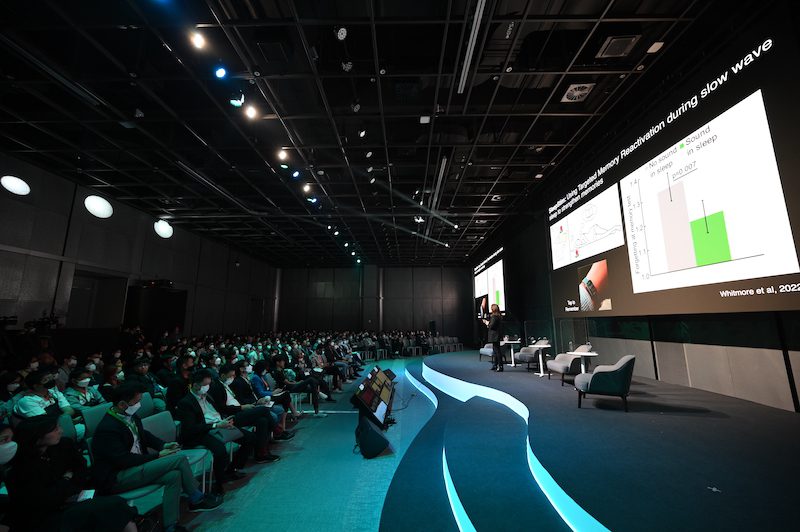
MIT Media Lab has showcased its technologies or reserarches at several events before. But such showcases, when held in Asia, mostly happen in Japan or South Korea. This time, such showcase has come to Thailand for the first time because Pat’s advisor Professor Maes has thrown in support. MIT Media Lab Southeast Asia Forum was finally organized in Thailand partly because MIT Media Lab’s researchers also wanted to find out what the country was like. Pat is the first Thai student there and he has shown outstanding abilities. His country, in their view, must be interesting.
Both KBTG and MIT Media Lab believe that MIT Media Lab Southeast Asia Forum has already made big impacts and encouraged people to learn more about science. Thai children visiting the event must have realized that scientists can make significant contributions and may be interested in becoming ones. High-level executives, meanwhile, must have found their interest in science and technology turns intense once more because of the forum. Their interest may be translated into support that facilitates Thailand’s advancement too.
“In our lives, we have had just a few life-changing moments. I believe MIT Media Lab Southeast Asia Forum marked one such moment for many children. Some of them may even become researchers at MIT Media Lab one day,” Ruangroj said, ”We are pleased and honored to have brought world-class researchers to Thailand in a way that inspires Thais to learn more about science and invest more in technologies”.
Ruangroj added that as MIT Media Lab Southeast Asia Forum had injected new energy into Thailand, the country had the potential to shine in research field in the future. MIT Media Lab, after all, is a top research institute.
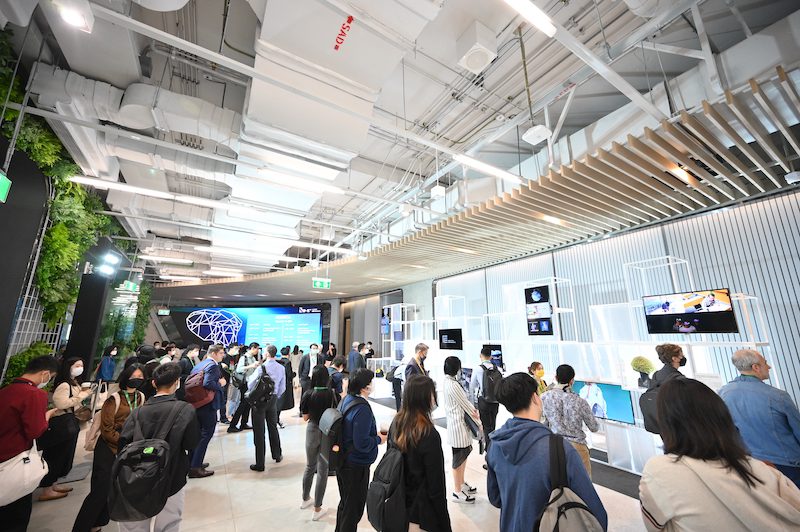
MIT Media Lab Southeast Asia Forum, moreover, marks an impressive collaboration of various Thai enterprises that have seen the need to foster frontier researches in Thailand. It takes cooperation from various sides to develop ecosystem and culture for in-depth researches and frontier researches that have the power to shape the future. Required are not just determination and dedication but also financial, human and time resources. KBTG is aware that some researches have the potential to change Thailand for the better but it alone cannot turn those researches into widespread impacts. KBTG therefore is actively engaging partners and pursuing collaborations.
“In 2023, we will try to start research collaborations that will lead to Thailand’s locally-developed solutions like energy-distribution systems, energy storage systems, food and Thailand’s soft power,” Ruangroj revealed.
He continued that MIT Media Lab Southeast Asia Forum would pave way for more such showcases to happen in Thailand, spreading the concepts of MIT Media Lab’s moonshot resarches and inspiring Thai organizations to connect with research institutes both in Thailand and beyond.
”The private sector must play a key role in changing Thaiand for the better,” Ruangroj said.
MIT Media Lab has already shown what mindset and approach will work. The rest depends on how players in Thailand will work together in generating meaningful impacts at the national scale. It will be good if all relevant parties identify the industries of the future and develop them seriously together for Thailand’s bright future.
One of Thailand’s big problems surrounds the fact that most Thai businesses consider tech researches as something irrelevant to them. They at most focus on short-term results or how those researches can serve their businesses in the next one to three years. In foreign countries, business organizations look much further ahead to what their tech researches can deliver in the long run. They focus on the overall pictures and long-term benefits that will be within reach in five to 20 years. Just a few Thais have been working in this direction for now.



